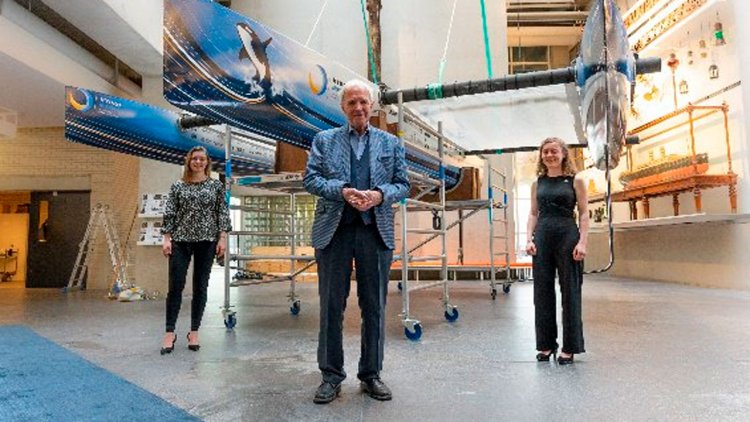A team of 20 ambitious students of various disciplinary backgrounds came together to form the TU Delft Solar Team 2021 and enter uncharted waters with Hydro Motion, a boat that not only sails, but flies on hydrogen. After 15 years of building boats successfully powered by sunlight, the 2021 team decided it was time to swap solar panels for a fuel cell to take the next step towards a more sustainable maritime industry.
The Netherlands-based team has spent the last nine months taking its new flying boat from concept to reality. With a focus on building a well-functioning hydrogen boat, they decided to refit the 2019 flying solar boat and use its three award-winning hulls and seaworthy trimaran. The solar panels were removed, and a hydrogen system was installed.
The boat is powered by the Cummins HyPM-HD30 fuel cell and will convert 99.9% pure hydrogen into electricity to power the boat’s driveline, electronics and other devices. The hydrogen is stored in a gaseous state in the hydrogen system tank, which has a 350-liter capacity and can store more than 8 kg of hydrogen gas, exceeding 265 kWH energy.
The fuel cell generates electricity through a chemical reaction of hydrogen and oxygen. To power the boat, the hydrogen gas from the storage tank will pass through the fuel cell stack and mix with atmospheric oxygen. In each cell of the fuel cell stack, the hydrogen splits off two electrons which cannot pass the proton exchange membrane that separates the hydrogen from the atmospheric oxygen. The hydrogen protons pass through the membrane to join with oxygen to form water vapor, and the two electrons travel around the membrane through a wire as electricity. That electricity will be used to power the boat’s motor.
Hydrogen is an advantageous alternative power source for the boat because it produces no carbon dioxide, has an energy density greater than lithium ion batteries and is lighter weight than batteries. However, the boat’s large size makes it more challenging to maneuver on Mediterranean waters and while it can sail smoothly on hydrogen, it will need an extra boost to reach the right take-off speed to fly.

That extra boost is a small battery pack optimized for power density. Combined, the battery pack and the HyPM-HD30 power a 70-hp, three phase electric brushless motor, similar to a Toyota Yaris car. The combination of power sources ensures there is enough power to take off. Once the hulls of the boat are out of the water and the boat is only flying on its hydrofoils, the 30-kW fuel cell is again sufficient to power the boat. The take-off takes place at 13.6 mph. At this point, the hulls are lifted out of the water and fly 40 cm above the surface with a speed of more than 20 mph.
The team revealed its boat to the public via livestream on May 10 at the Maritime Museum Rotterdam. Two weeks later, the team put the boat in open water at the Port of Rotterdam for the first time to conduct its first wet-test. Test 1 results showed the boat is watertight, sails stably on batteries and has a sailing speed of 20 km/h with 2000 rpm on the propeller. The students will continue testing and improving the boat over the next few weeks to increase speed, sail using the hydrogen system, and check for safety, efficiency and endurance.
Once testing is complete, three team members will captain the boat in the Monaco Solar & Energy Boat Challenge. This international challenge invites students and professionals from across the world to compete in three classes: Energy, Solar and Open Sea Class. The TU Delft Solar Team will sail the open ocean and compete in the Open Sea Class.
Powered by hydrogen, using a Cummins fuel cell and the minds of 20 dedicated students, the first flying hydrogen boat is propelling the world another league further towards a zero-carbon future and a more sustainable maritime industry. As the TU Delft Solar Boat Team continues to work on Hydro Motion to get it competition ready, we look forward to the day they fly over the finish line on green energy.



